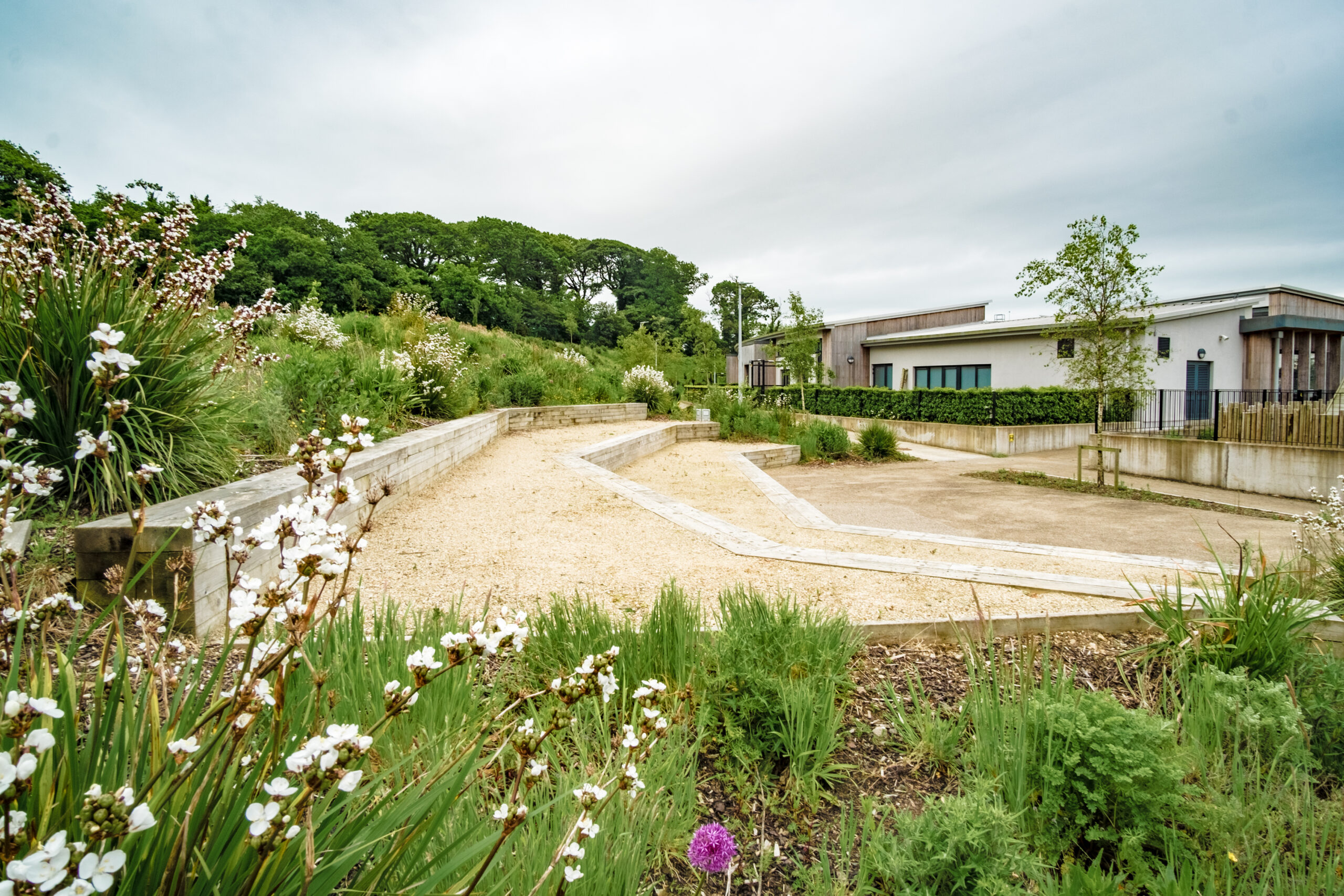
St Patrick’s Special School
Placemaking
,Urban Realm
,Wellbeing


Categories:
Placemaking, Urban Realm, WellbeingTags:
Biodiversity, Community, Educational Spaces, Native Planting, Planting Design, Recreational Spaces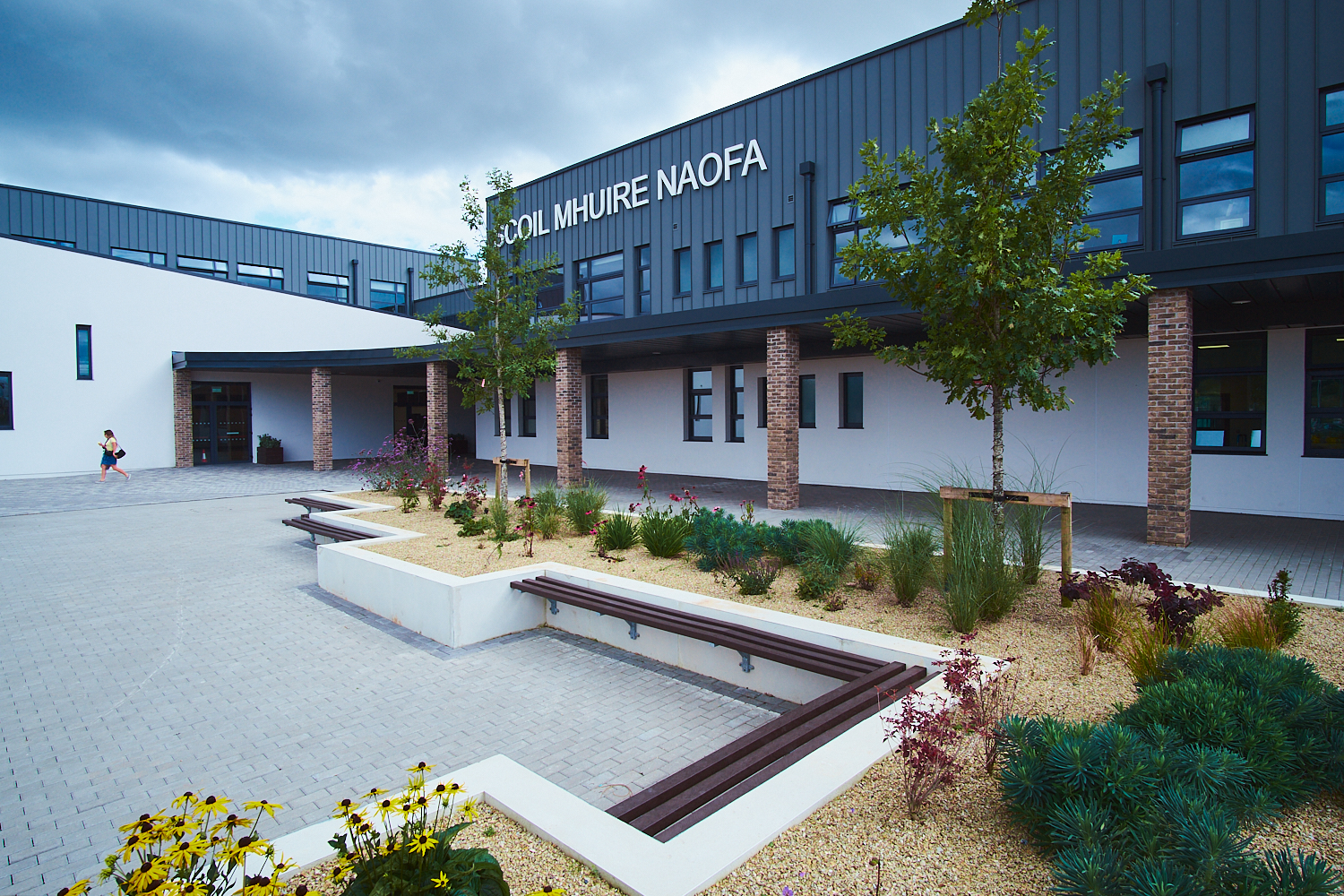
Nestled in the heart of the vibrant Carrigtwohill in County Cork, three educational premises have been designed and built, meeting the needs of the richly diverse community:
Teams of passionate and dedicated staff ensure that the environments created within are supportive, inspiring and encouraging for all students in attendance to flourish. Austen Landscape Architects joined this multidisciplinary project, Scoil Mhuire Naofa designed by CJFA Architects and constructed by ABM Contractors, and Carrigtwohill CNS and Carrigtwohill Community College designed by Healy Partners Architects and constructed by JJ Rhatigan Building Contractors, collectively ensuring the delivery of a high quality cohesive design.
Commissioned from the tender through to the construction stage, Austen Landscape Architects were responsible for:
The transformation of the school’s outdoor spaces embraced opportunities to integrate several main design areas including permitter planting (hedges and trees), low maintenance ground cover planting that are attractive to pollinators, wildflower areas, grass lawn spaces, individual specimen trees to provide variety and scale, ensuring overall, a more naturalistic learning environment and maximising the biodiversity gain.
Across the three sites, areas that might traditionally have been left as large expanses of amenity grass or dense shrub planting were instead reimagined as opportunities for richly varied and purposeful planting. Reflecting the diversity of the surrounding community, ALA incorporated a range of key design features and solutions to meet the unique requirements of each space – whether for educational engagement, quiet reflection, recreation, or interactive experiences.
Universal Accessibility: ensuring seamless movement for all users, including those with mobility impairments or wheelchair requirements.
Sensory and Garden Play Spaces: A secure, tranquil environment featuring a sensory maze, thoughtfully designed to encourage sensory exploration and offer a peaceful meditative space supporting quiet reflection, relaxation and overall well-being.
Outdoor Spaces: Defined spaces that support outdoor learning, fostering interaction with nature and an alternative environment for teaching
Break time Seating Areas: Strategically placed seating to facilitate social interaction during breaks and lunchtime including picnic tables and integrated recycled timber top seating.
Raised Vegetable Beds: A dedicated space for students to engage in hands-on gardening, enhancing environmental awareness and life skills
Ball Courts: Secure, controlled-access courts for organised sports and recreational play.
Bicycle Parking: secure, covered bike parking spaces for students, staff, and visitors, promoting sustainable transport.
Entrance and Parking: A naturalistic and welcoming arrival space designed to create a strong sense of identity while seamlessly settling into the existing landscape. The layout and materials promote a harmonious connection with the surrounding environment, offering a calm and inviting first impression..
Secure School Boundary: Defined edges that maintain security while allowing permeability where needed.
Low-Maintenance, Resilient Planting: A robust, easily maintained planting scheme that provides both structured greenery and opportunities for students to engage in their own planting initiatives.
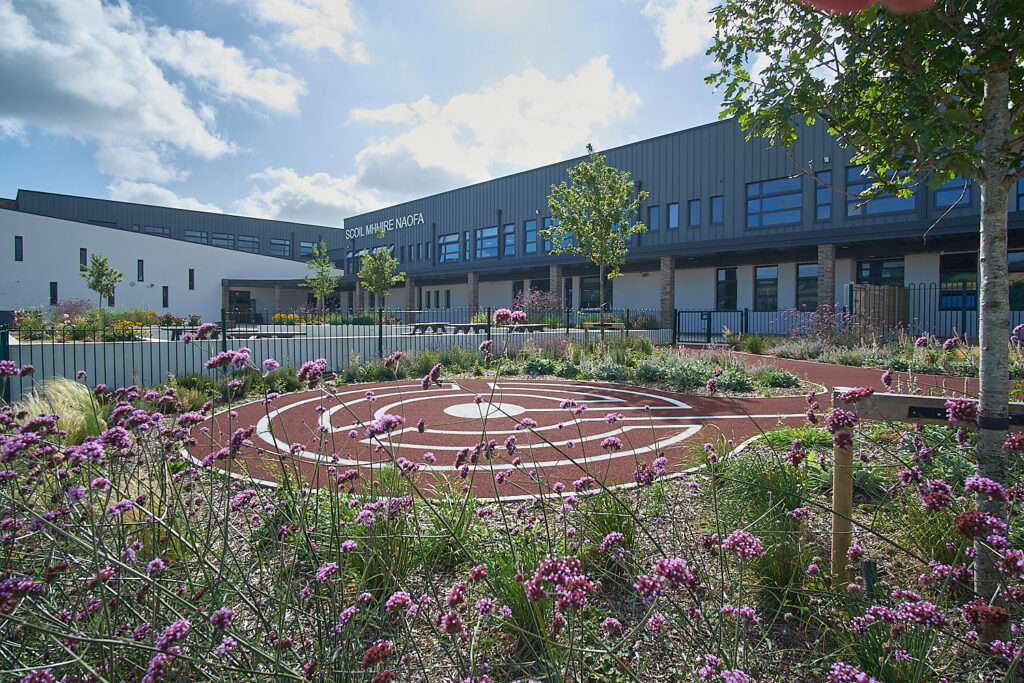
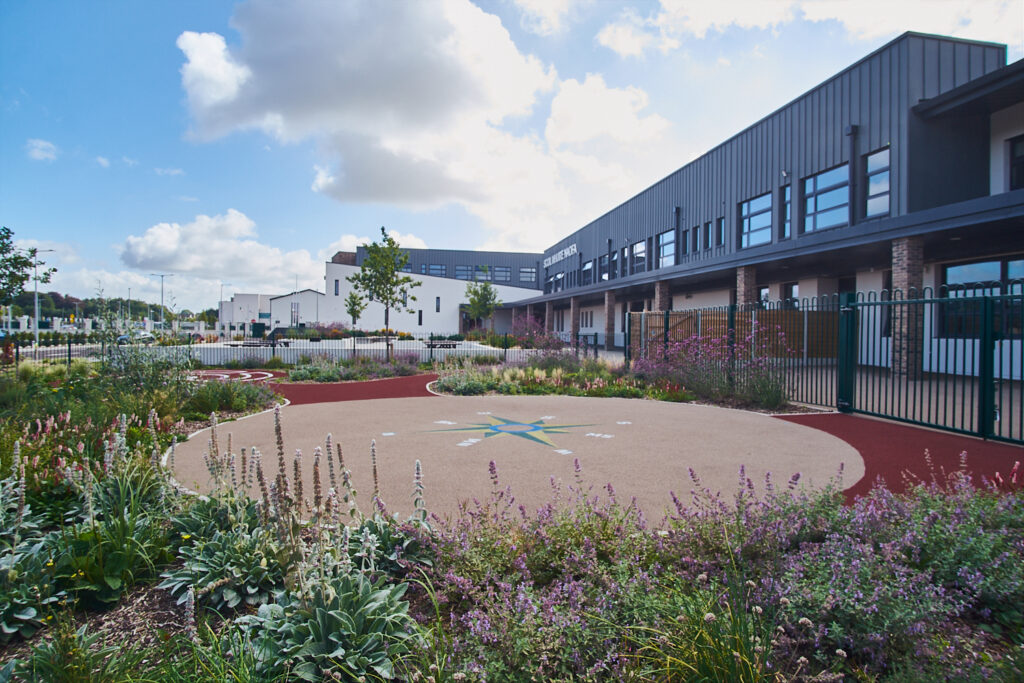
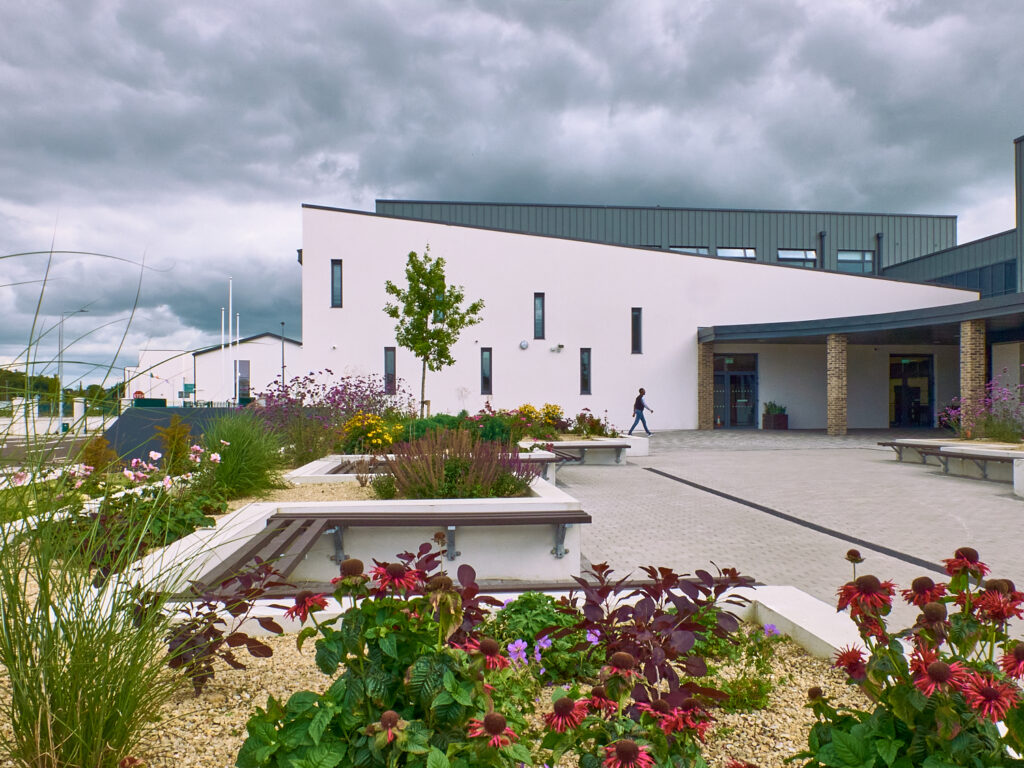
Additional considerations included ensuring that the existing Woodstock stream running adjacent to Carrigtwohill Community School and Carrigtwohill CNS. It was essential that the riparian corridor along the stream be protected and handled with great care, ALA carefully designed to ensure minimal disturbance to this sensitive area during the implementation of the overall design with maximum reward of ensuring this biodiversity haven would continue to thrive.
Continuous consultations and collaborations with the schools, Cork County Council and the Ecology section of the Planning Department occurred to ensure that the planting introduced would be predominantly native and locally sourced where possible. Informed with ecological surveys, local knowledge and experience, and ongoing collaboration with these relevant bodies, ALA refined and tailored the recommended planting lists to closely reflect the unique characteristics of each site.
The use of native species is crucial as they are naturally adapted to the local environment, requiring less maintenance and water. They provide essential habitats and food for local wildlife, support biodiversity, and help maintain a balanced ecosystem. Additionally, native plants are more resilient to pests and diseases, reducing the need for chemical interventions.
In tandem with the All Ireland Pollinator Plan 2021-2025, recommended pollinator friendly plants were incorporated within the planting lists to continue to supporting local biodiversity.
Pollinator friendly features such as insect hotels and bird boxes will be inserted throughout the sites further promoting sustainability by reducing the need for pesticides and contributing to healthier ecosystems, while enhancing the school’s outdoor spaces with colour, beauty, and a connection to nature.
Other planting opportunities included the successful integration of native woodland planting, grass meadows, similarly implemented in various locations across Cork, including Kennedy Park and Ballyannan Woodland Walk and traditional orchard trees, including apple, pear, plum, damson, hazelnut and walnut have been planted across the three school sites.
Native Irish perennial wildflower meadows were allocated for specifically sourced provenance and locally grown seeds. The ambitions of the project to be as locally native as possible are to be commended however availability is limited by supply. On this ALA were able to consult with Connecting to Nature, who were able to source a mix that would be as close as feasibly possible. The ‘Traditional Irish Mix’ contains 42 different species of annual, perennial and biennial wildflowers. These seeds are harvested mainly in Waterford, Wexford, Kilkenny and Tipperary, with some smaller amounts harvested in the west of the country depending on the growing conditions. This mix would gradually integrate with existing vegetation through the addition of the complementary native seed mix.
As a collective, all the planting mixes and their designated areas will continue to support diverse wildlife, provide habitats for insects and small mammals, while enhancing the school landscape’s biodiversity. Valuable opportunities are available for students to learn about ecology, the importance of habitats, pollination, sustainability, healthy eating and the natural environment.
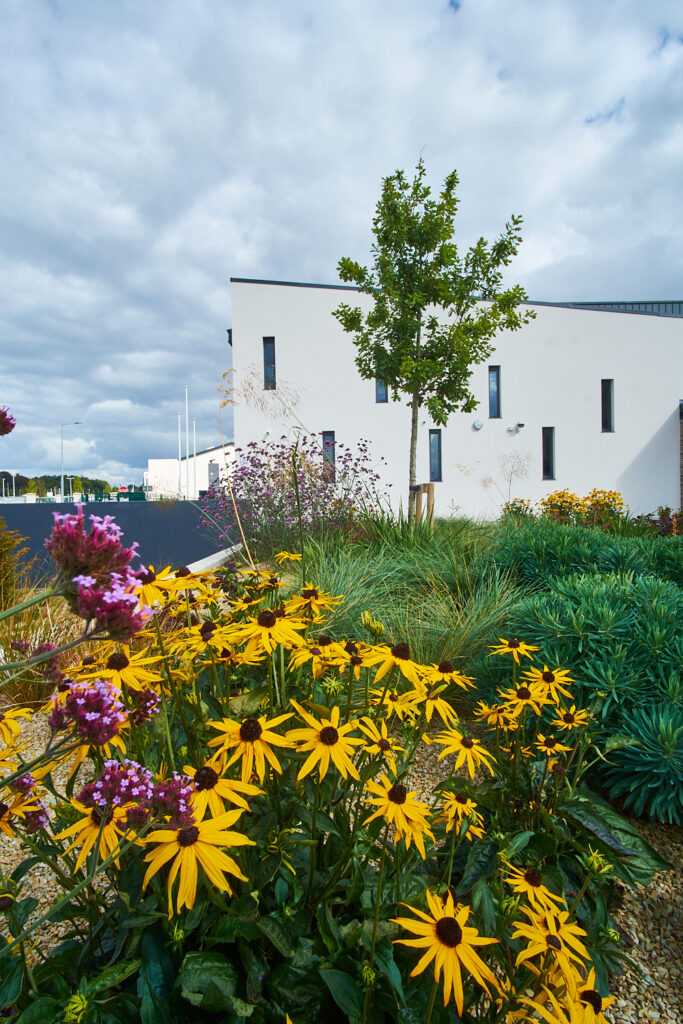
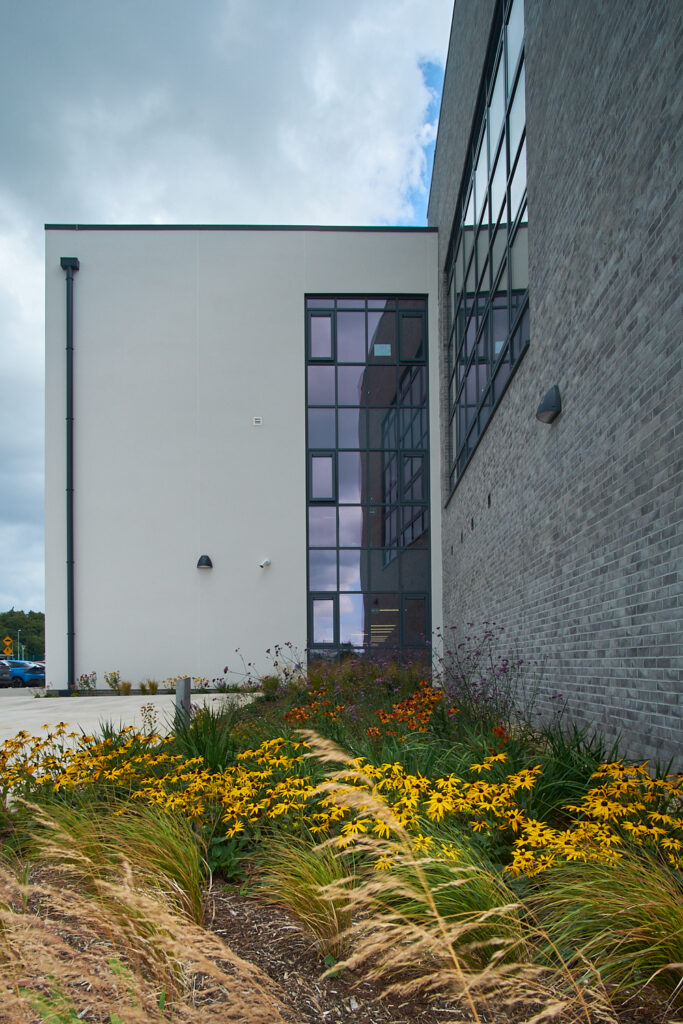
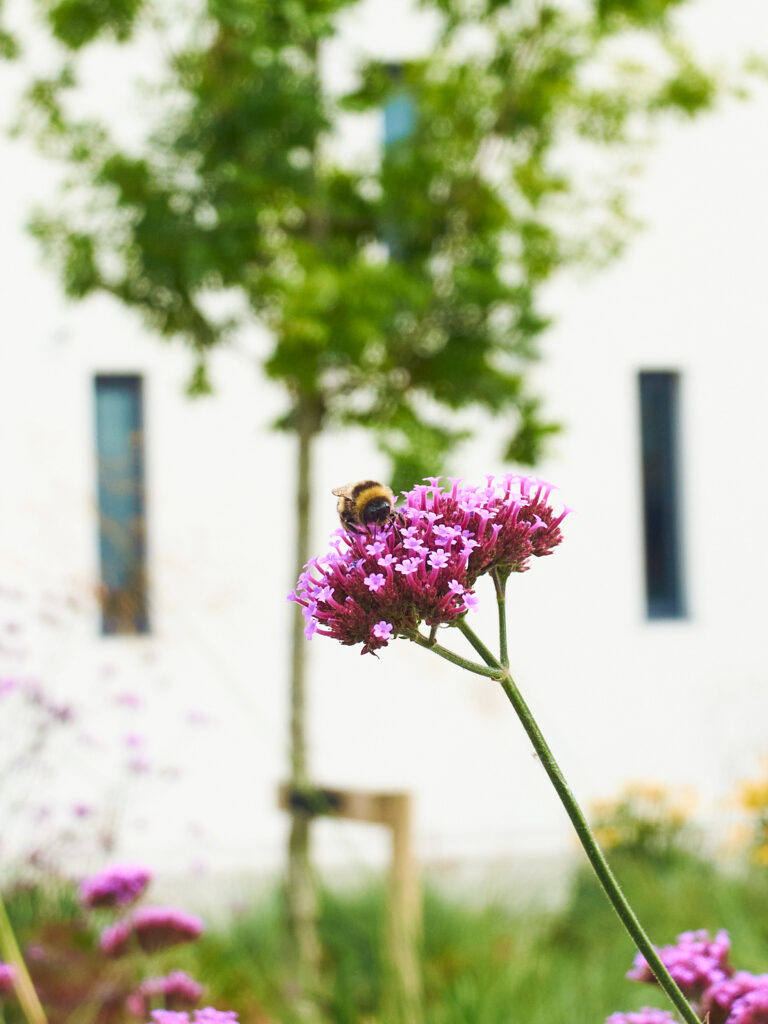
The implementation and installation of the carefully curated planting schemes were carried out by Avara Landscapes and Éire Landscapes.
The completion of these three school campuses marks a significant step forward in creating outdoor environments that are not only functional and inclusive but also deeply connected to their natural surroundings. Through thoughtful design, collaboration, and the integration of native biodiversity, the landscapes now offer meaningful spaces for learning, play, reflection, and ecological stewardship. This project stands as a testament to the value of well-considered landscape architecture in shaping enriching, sustainable environments that will benefit students, staff, and the wider Carrigtwohill community for generations to come.